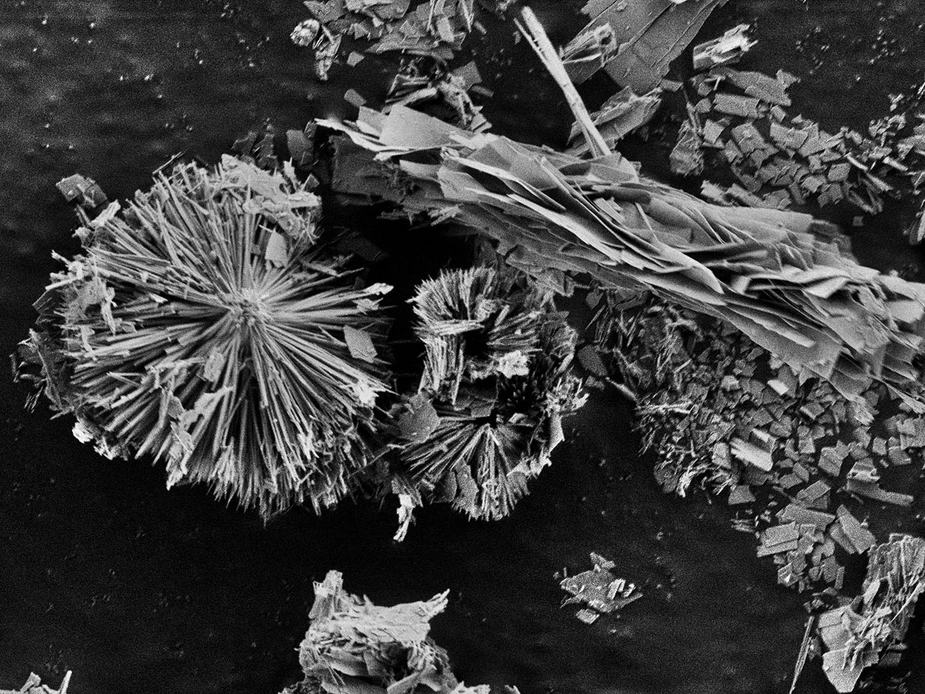MXenes show talent as catalyst for the production of green hydrogen
This class of materials is more stable and efficient than the best metal oxide catalysts currently available
The MXene class of materials has many talents. An international team led by HZB chemist Michelle Browne has now demonstrated that MXenes, properly functionalised, are excellent catalysts for the oxygen evolution reaction in electrolytic water splitting. They are more stable and efficient than the best metal oxide catalysts currently available. The team is now extensively characterising these MXene catalysts for water splitting at the Berlin X-ray source BESSY II and Soleil Synchrotron in France.
Green hydrogen is seen as one of the energy storage solutions of the future. The gas can be produced in a climate-neutral way using electricity from the sun or wind by electrolytic water splitting. While hydrogen molecules are produced at one electrode, oxygen molecules are formed at the other. This oxygen evolution reaction (OER) is one of the limiting factors in electrolysis. Special catalysts are needed to facilitate this reaction. Among the best candidates for OER catalysts are, for example, nickel oxides, which are inexpensive and widely available. However, they corrode quickly in the alkaline water of an electrolyser and their conductivity also leaves much to be desired. This is currently preventing the development of low-cost, high-performance electrolysers.
MXene as catalysts
A new class of materials could offer an alternative: MXenes, layered materials made of metals, such as titanium or vanadium, combined with carbon and/or nitrogen. These MXenes have a huge internal surface area that can be put to fantastic use, whether for storing charges or as catalysts.
An international team led by Dr Michelle Browne has now investigated the use of MXenes as catalysts for the oxygen evolution reaction. PhD student Bastian Schmiedecke chemically 'functionalised' the MXenes by docking copper and cobalt hydroxides onto their surfaces. In preliminary tests, the catalysts produced in this way proved to be significantly more efficient than the pure metal oxide compounds. What's more, the catalysts showed no degradation and even improved efficiency in continuous operation.
Measurements at BESSY II
Measurements at the BESSY II X-ray source, with Namrata Sharma and Tristan Petit, showed why this works so well: “We were able to use the Maxymus beamline there to find out how the outer surfaces of the MXene samples differ from the inside,” explains Schmiedecke. The researchers combined scanning electron microscopy (SEM/TEM), X-ray diffraction (XRD), X-ray photoelectron spectroscopy (XPS), X-ray transmission microscopy (STXM) and X-ray absorption near-edge structure (XANES) to gain further insights into the material.
Outlook: observation under continuous load
"We have been able to show that MXenes have great potential for use as catalysts in electrolysers," says Michelle Browne. The collaboration with partner teams from Trinity College, Dublin, Ireland, and the University of Chemistry and Technology, Prague will continue. In addition to further chemical variations of MXene catalysts, the team also plans to test such catalysts in conventional electrolysers in continuous operation.
Publication:
Journal of Materials Chemistry A: Enhancing the Oxygen Evolution Reaction activity of CuCo based Hydroxides with V2CTx MXene.
Bastian Schmiedecke, Bing Wu, Thorsten Schultz, Aline Alencar Emerenciano, Namrata Sharma, Danielle Douglas-Henry, Apostolos Koutsioukis, Mehmet Turan Goerueryilmaz, Valeria Nicolosi, Tristan Petit, Norbert Koch, Zdenek Sofer, and Michelle Phillippa Browne
DOI: 10.1039/D4TA02700K
Contact:
Helmholtz-Zentrum Berlin für Materialien und Energie
Young Investigator Group: Electrocatalysis: Synthesis to Devices
Bastian Schmiedecke
Email
Dr. Michelle Browne
+49 30 8062-43758
Email
Dr. Antonia Rötger
Press Officer
+49 30 8062-43733
Email
Press release HZB, 9 September 2024
